The Isle of Mull stands out as a top destination for wildlife enthusiasts, drawing visitors eager to observe some of Scotland’s most captivating creatures. This island sanctuary offers extraordinary opportunities to get up close with its renowned ‘Big 5’ – a collection of magnificent animals that define the island’s wild heart. Prepare to be enchanted by Mull’s vibrant animal inhabitants, each representing a unique facet of its rich natural world.
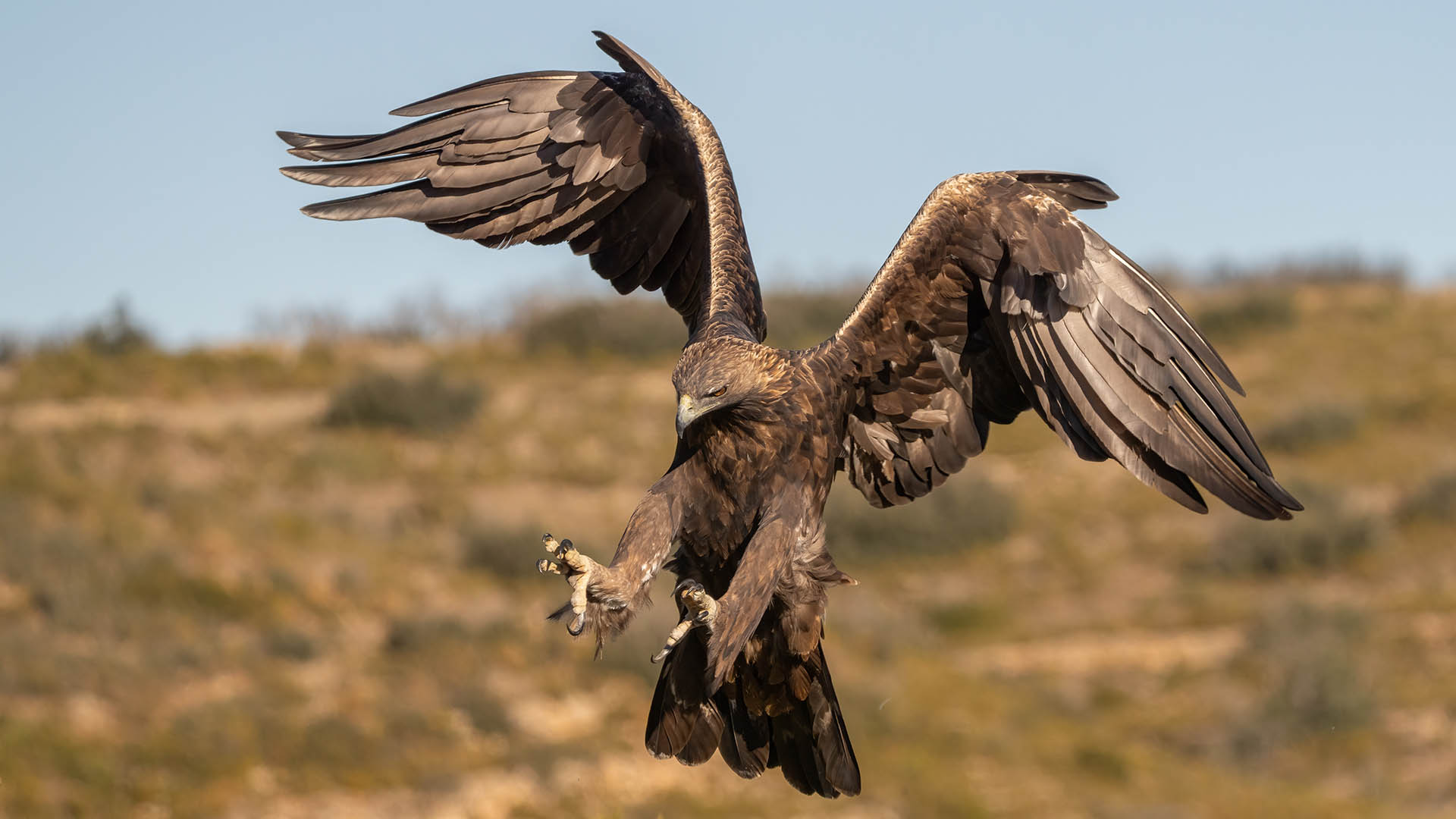
Mull is known for its high density of nesting golden eagles, making it a prime location to spot these birds of prey.
1. Majestic Birds of Prey: Mull’s Sky Hunters
Mull is truly a spectacle for birdwatchers, especially those hoping to see magnificent raptors.
Golden Eagles:
These powerful birds, instantly recognizable by their radiant golden-brown plumage and broad wingspan, are frequently observed circling high above Mull’s rugged terrain. The island boasts a significant breeding population, making sightings more common than in many other areas. Watch for their impressive hunting dives and territorial displays, a testament to their dominance in the Scottish skies.
White-Tailed Sea Eagles:
Standing as Britain’s largest bird of prey, the White-Tailed Sea Eagle, sometimes called the ‘flying barn door,’ made a successful return to Mull in recent decades. Look for their immense wings (spanning up to 2.5 meters), and their distinctive short, wedge-shaped tail, often pure white in adults. These incredible creatures are powerful hunters, often seen patrolling the coastlines and inland lochs. Their re-establishment on the island is a beacon of conservation success.
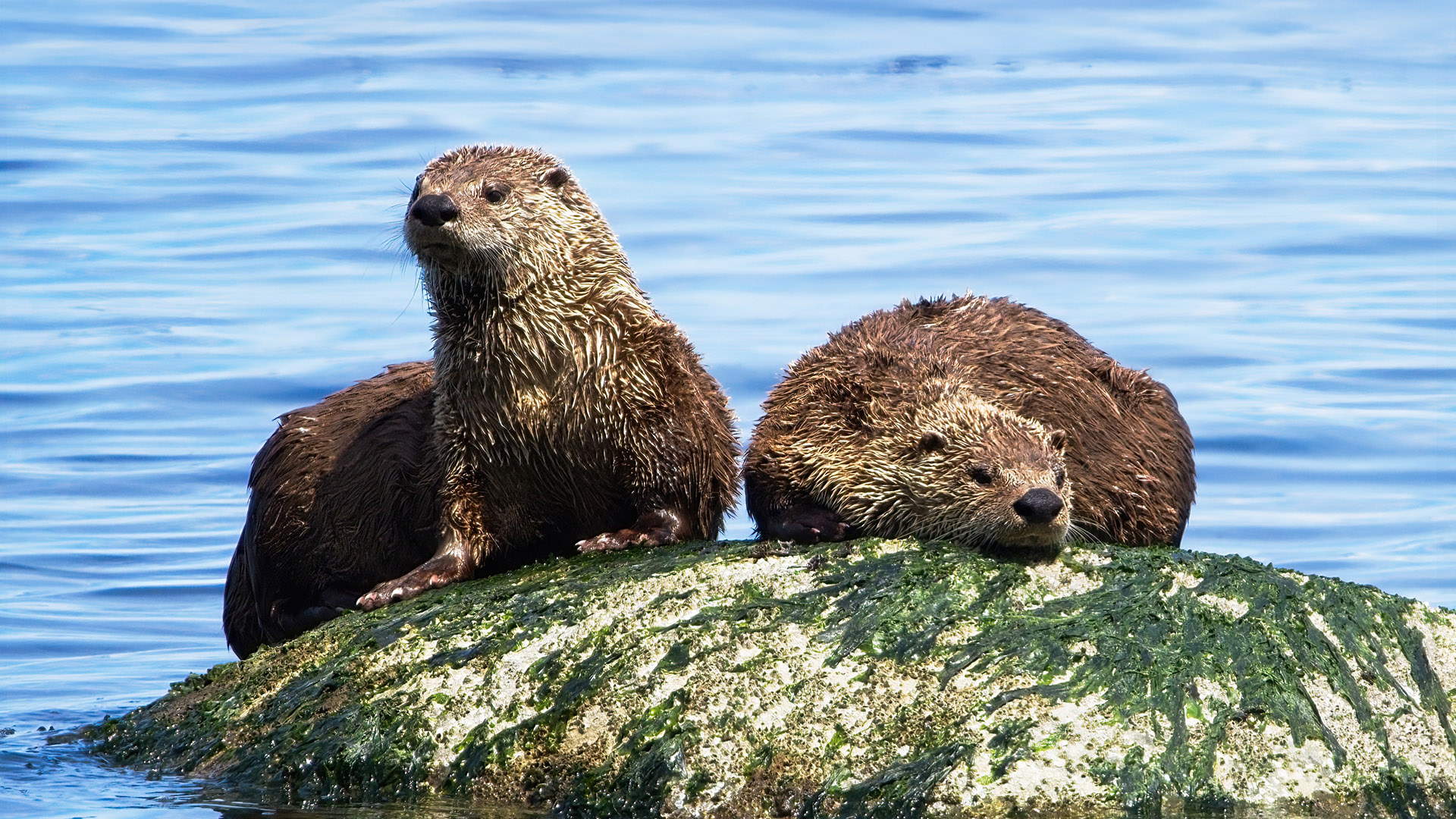
Otters are a popular wildlife attraction on the Isle of Mull, known for their coastal habitat and daytime activity.
2. Coastal Wonders: The Elusive Otters
Mull is celebrated for having one of the highest densities of otters in Europe, offering an exceptional chance to spot these enchanting mammals. Known for their playful nature and sleek, agile movements, otters thrive along the island’s varied coastline.
Unlike many places where they are strictly nocturnal, Mull’s otters can often be seen during daylight hours, their activity dictated more by tidal movements than by darkness. They expertly navigate the rocky shorelines, fishing in the clear waters, or grooming their dense, waterproof fur. Observing an otter in its natural environment – perhaps catching a fish or a family group frolicking together – is a truly rewarding experience that connects you deeply with Mull’s wild essence. Patience and quiet observation are key to these special encounters.
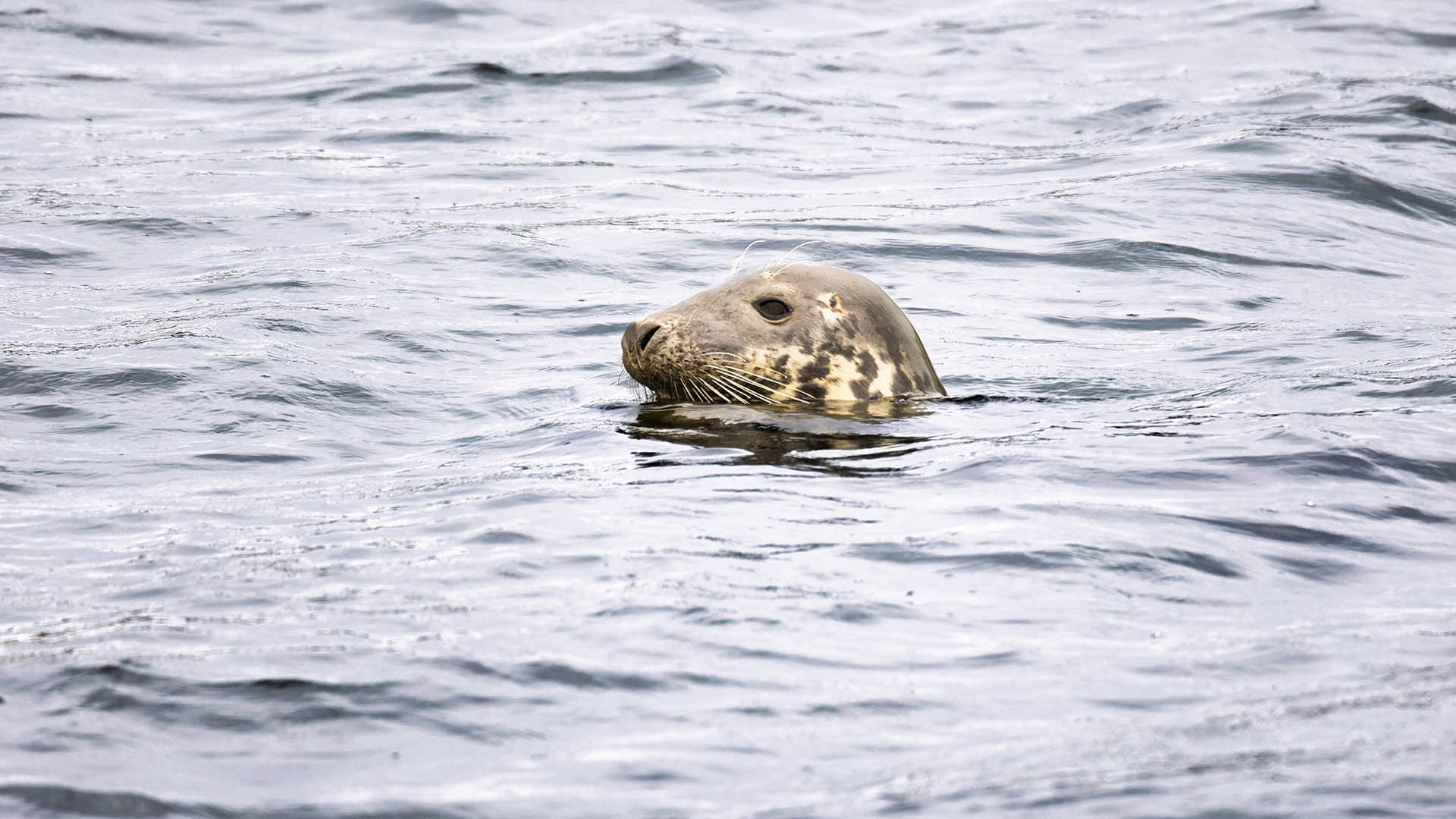
The best time to see grey seals is during their breeding season in the autumn, when they gather on remote islands to give birth.
3. Residents of the Shoreline: Mull’s Seals
The waters surrounding Mull are a vital habitat for two common seal species, both regularly seen resting on the shore or swimming playfully.
Atlantic Grey Seals:
These larger seals are easily identified by their elongated, Roman-nosed profile. During autumn, remote island shores become breeding grounds, where you can witness the captivating scene of their white-coated pups and the impressive bull seals.
Harbour (Common) Seals:
With their rounder, ‘dog-like’ faces, Harbour Seals prefer more sheltered bays and estuaries. They are often seen hauled out on rocks and skerries, sometimes adopting a unique ‘banana’ shape while basking in the sun. Their pups are born in early summer and are capable swimmers almost immediately, making them a common sight during boat excursions.
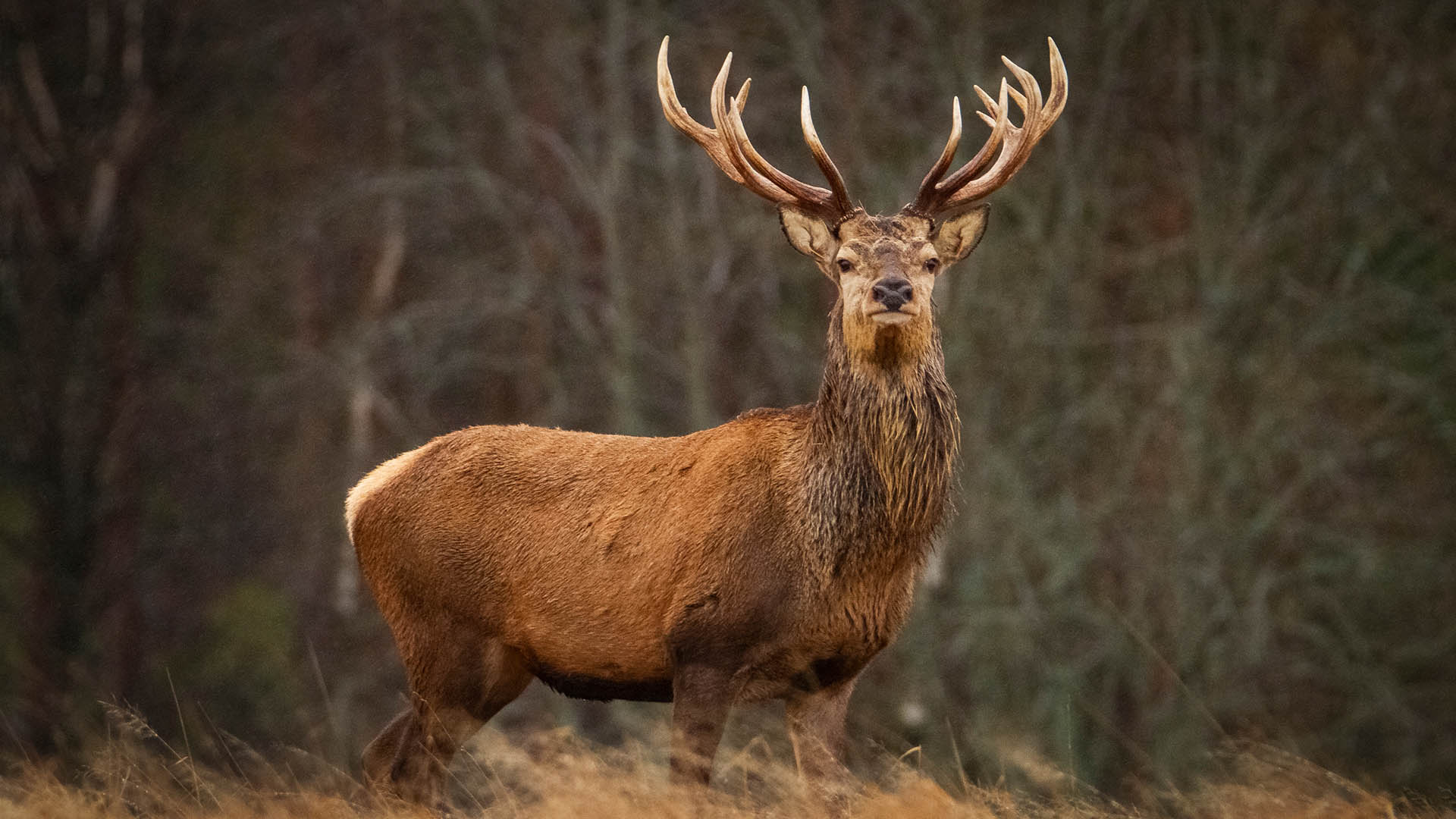
Red deer are a prominent feature of the Isle of Mull’s wildlife, with a large population estimated at over 6,000, making them a common sight throughout the island.
4. Rulers of the Glens: The Mighty Deer
Mull’s rugged interior and expansive Scottish glens are home to a thriving population of deer, with the majestic Red Deer being the most prominent.
Red Deer:
As Britain’s largest land mammal, the Red Deer is an iconic presence across Mull’s hillsides. While they might be more visible on lower ground during colder months, they are a common sight throughout the island’s diverse landscapes and glens. Autumn is a particularly dramatic period, as the deep roars of stags echo across the glens during the annual rut, a powerful display of nature’s raw energy.
Fallow Deer:
Less widespread than their red counterparts, Fallow deer can also be spotted on Mull, often in wooded pastures. Known for their varied coat colors, from spotted to dark brown, they add another dimension to the island’s deer population.
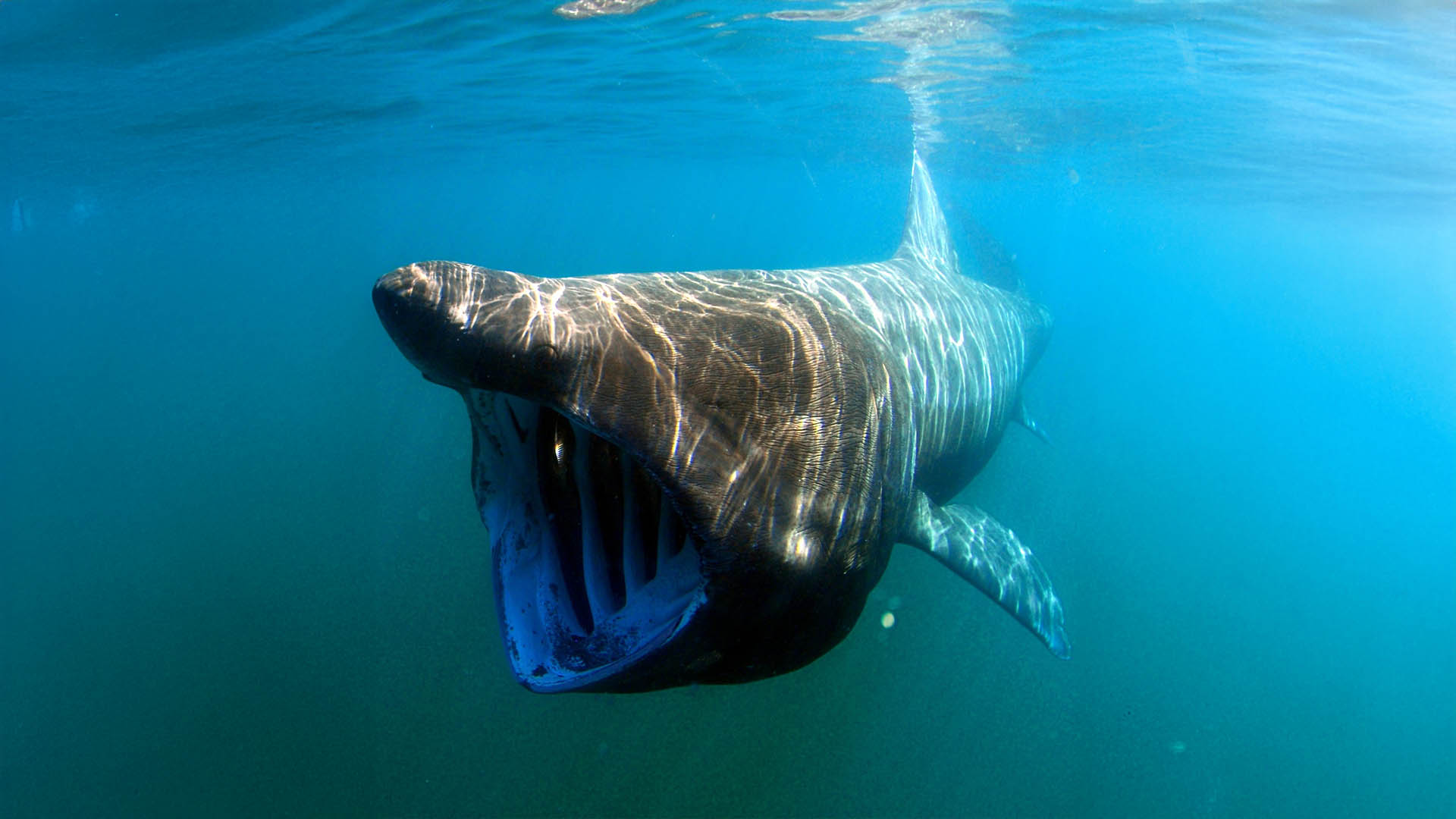
Basking sharks are frequently sighted around the Isle of Mull, particularly during the summer months.
5. Depths of Wonder: Marine Giants and Agile Swimmers
The nutrient-rich waters off Mull’s coast are teeming with life, offering thrilling opportunities to encounter a remarkable array of marine mammals and colossal fish. Boat trips are highly recommended to explore this vibrant underwater world.
Basking Sharks:
Keep an eye out for the colossal Basking Shark, the world’s second-largest fish. These gentle giants are summer visitors to Mull’s plankton-rich waters, often seen slowly gliding near the surface, filtering their nutrients with their enormous mouths agape.
Whales and Dolphins:
Mull is a prime location for spotting various cetaceans. Minke whales are frequently seen, often surfacing briefly before diving. Lively groups of common dolphins are a joy to behold as they leap and play alongside boats. More robust bottlenose dolphins and the distinctively marked Risso’s dolphins also inhabit these waters. Look for the small, shy harbour porpoises, often making just a quiet ‘puff’ as they surface. On rare and exciting occasions, the majestic orca (killer whale) can also be glimpsed, adding to the thrill of a sea safari.
Mull’s ‘Big 5’ offer more than just sightings; they provide an immersive experience into the raw beauty and thriving biodiversity of Scotland’s west coast. Whether you’re an avid photographer, a seasoned birder, or simply a nature lover, the Isle of Mull promises unforgettable wildlife encounters that will leave you with a profound appreciation for its wild inhabitants. For those seeking expert guidance, consider booking with guided wildlife tours to enhance your experience.
This book guides the reader through that world. With superb illustrations and illuminating text, we are led to the wild side of Mull. Every facet of the island’s natural history is considered, its diverse species and many stories – past, present and future. Along the way we are reminded that wildness is not somehow separate from the human world but influenced, and shared, by nature and people together.


